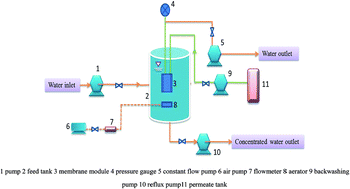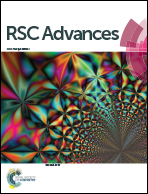Optimization of cleaning conditions on a polytetrafluoroethylene (PTFE) microfiltration membrane used in treatment of oil-field wastewater
Abstract
Membrane fouling is one of the main drawbacks of microfiltration technology during the treatment of oil-field wastewater. To improve the overall efficiency requires deep research on the optimization of membrane cleaning procedures. In this study, the effect of NaOH, NaOCl and HCl concentrations, soaking time and temperature on the flux recovery of the PTFE membrane were investigated. Box–Behnken (BBD) coupled with Response Surface Methodology (RSM) was applied to provide clear understanding of the interaction between various process parameters. The process operating parameters were then optimized accordingly. The optimum conditions of NaOH, NaOCl, HCl, soaking time, and temperature were 1%, 0.72%, 0.65%, 3.35 h and 40.0 °C, respectively, under which flux recovery rate can reach 100%. In addition, analyses of field emission scanning electron microscopy (FESEM), Fourier Transform Infrared (FTIR), atomic force microscopy (AFM) and contact angle (CA) reflected that the foulants accumulated on the membrane surface could be effectively removed at the optimum conditions.


 Please wait while we load your content...
Please wait while we load your content...